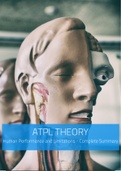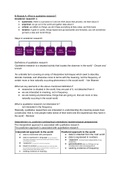Samenvatting
ATPL Theory - Human Performance and Limitations Summary
This document sums up all the important information concerning Human Performance and Limitations. Human Performance and Limitations is one of the fourteen subjects that a student pilot needs to pass in order to continue the ATPL-training program. It is written by myself and can therefore contain fa...
[Meer zien]





